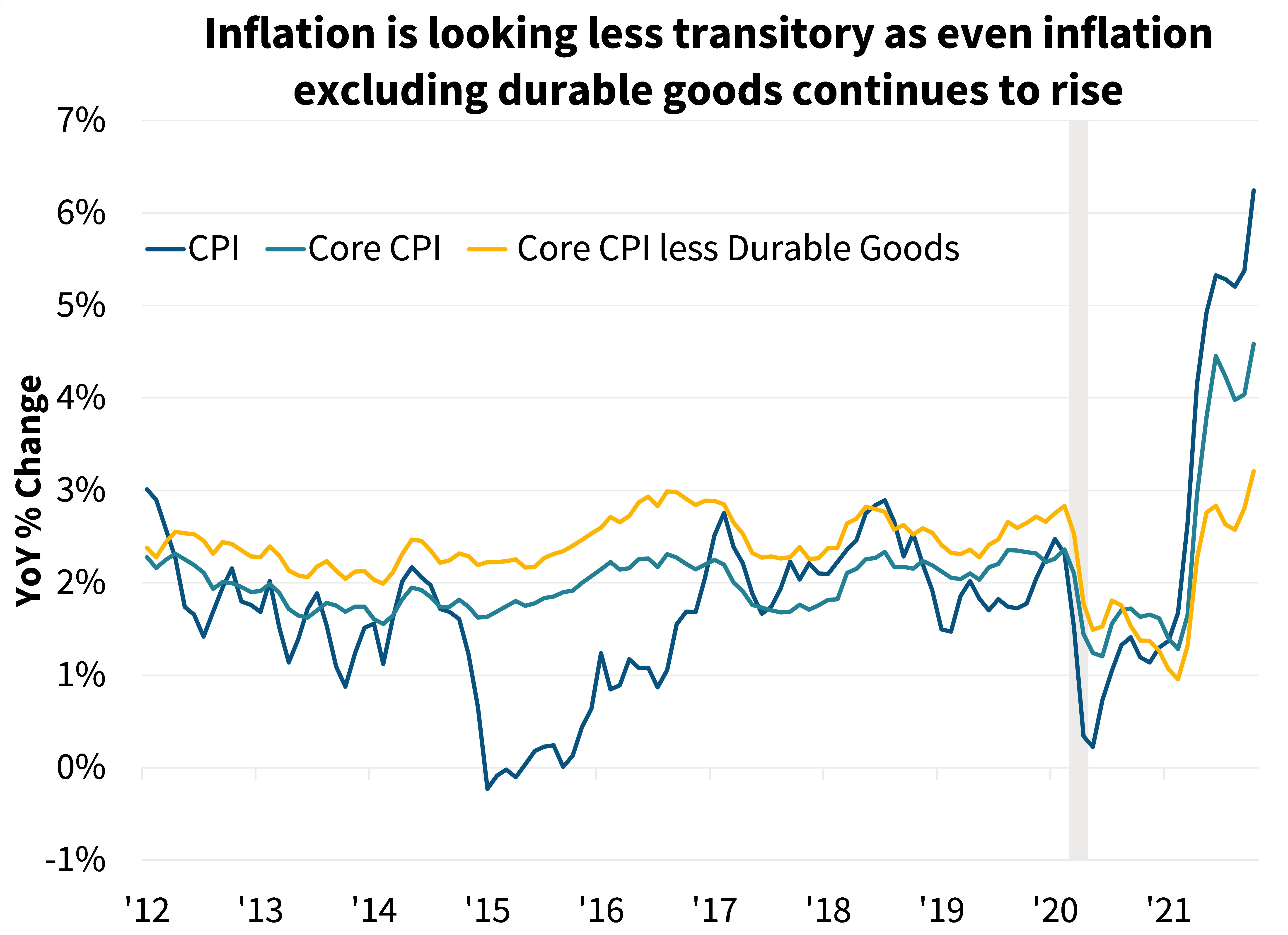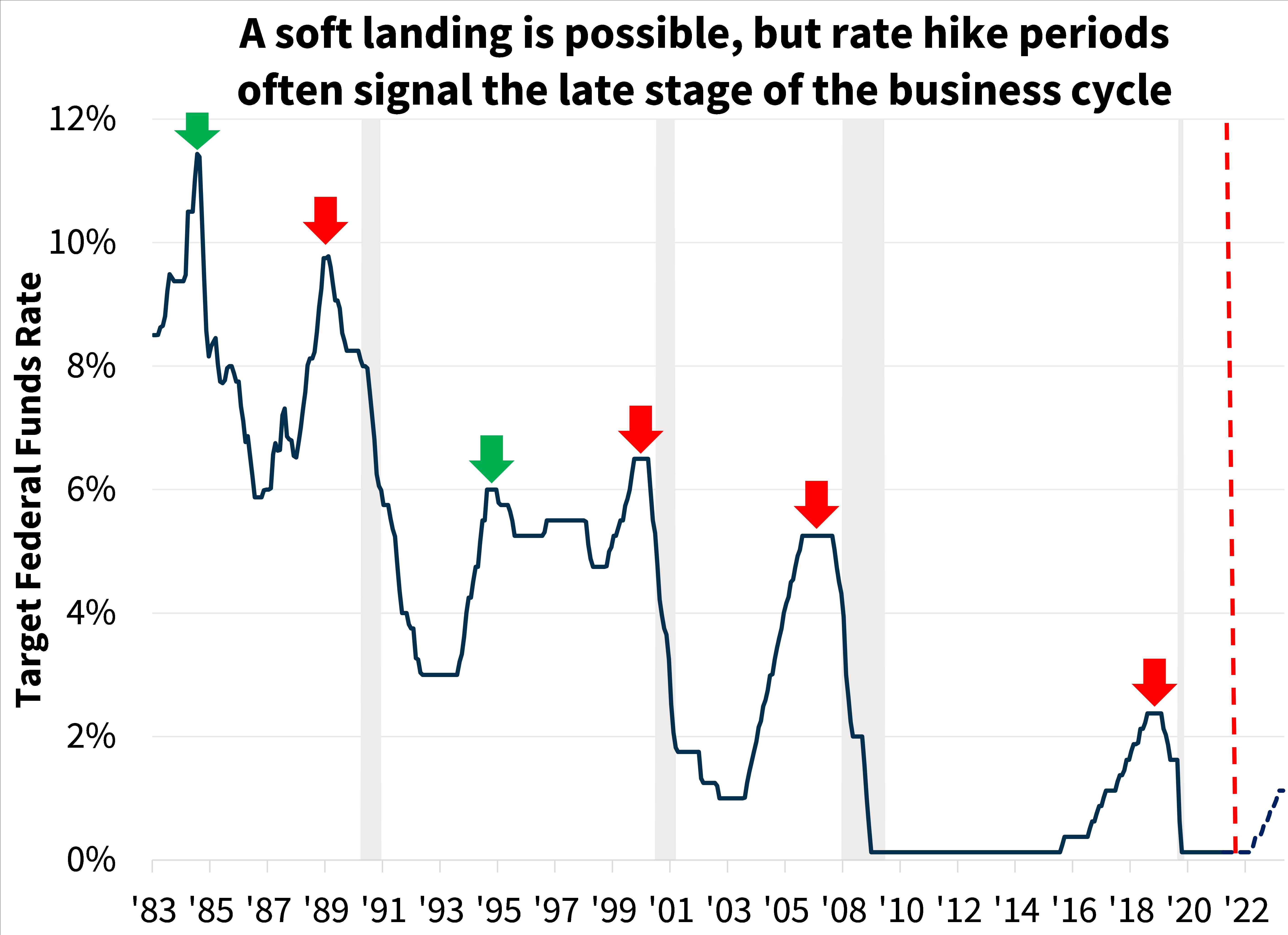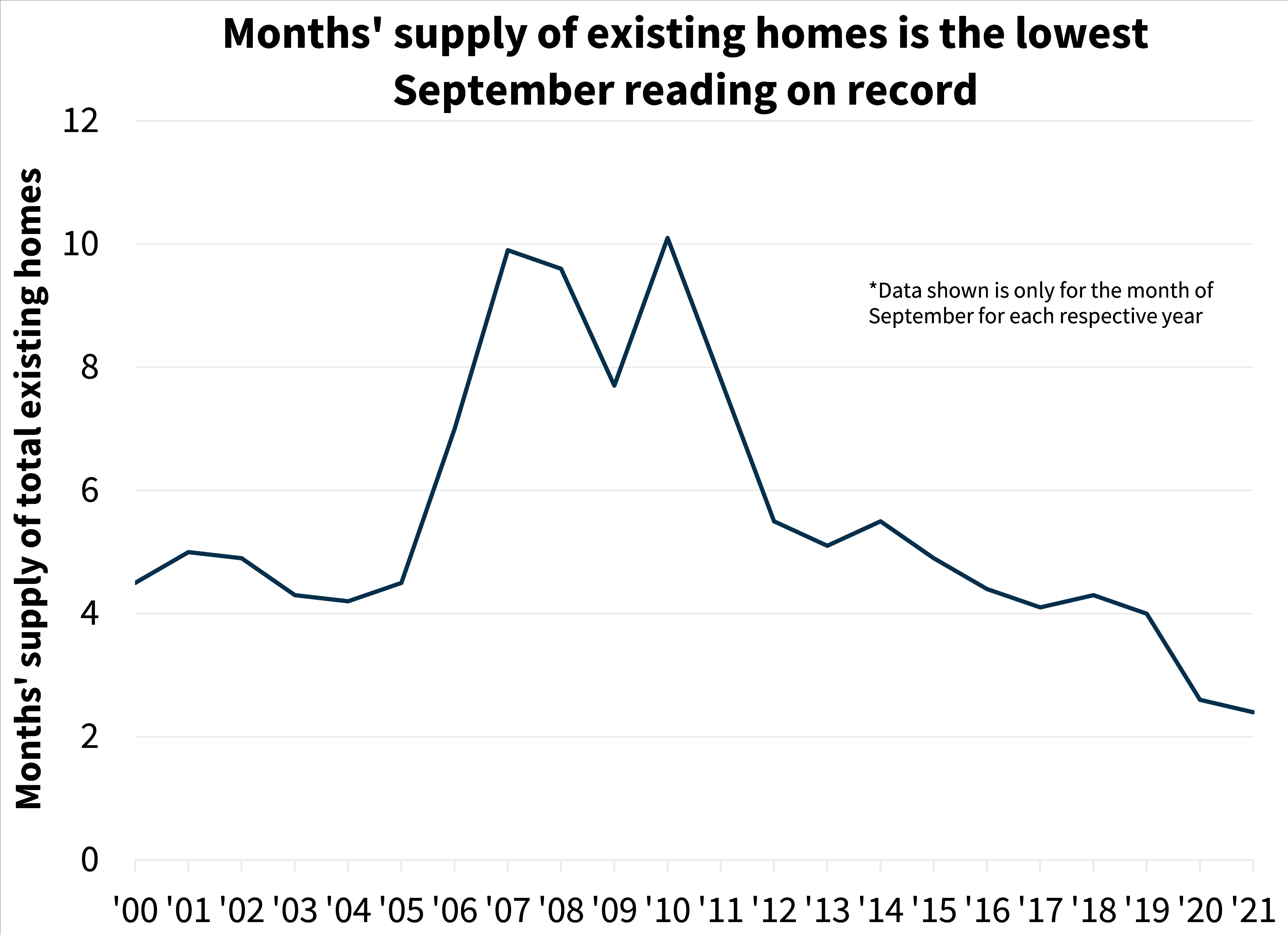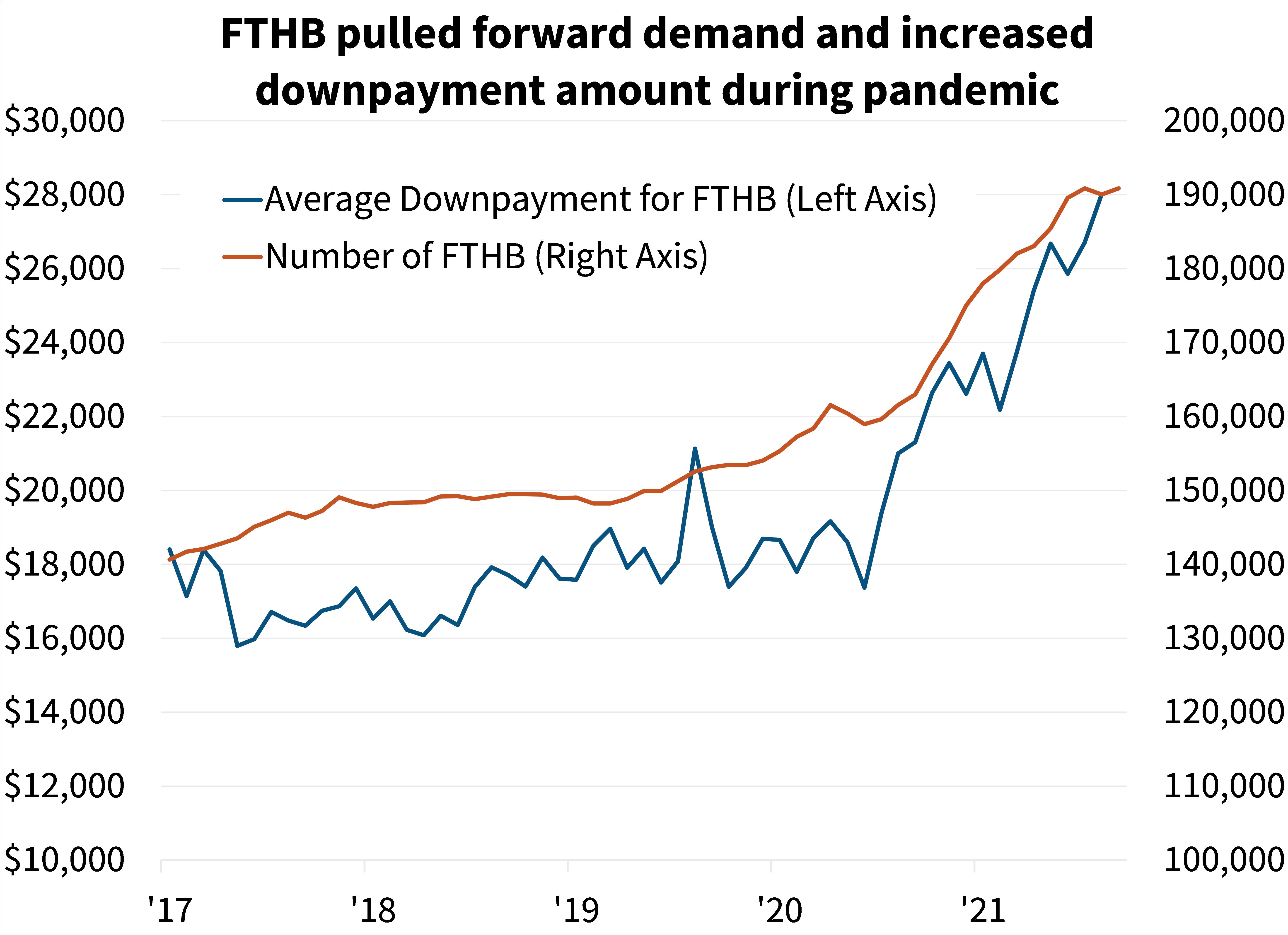Fed Begins Taper with Inflation in Focus
The October Consumer Price Index (CPI), reported after the completion of our forecast, was two-tenths higher than we had expected. Therefore, our already upwardly revised Q4 2021 forecast of 6.2 and 4.6 percent for annual topline and core CPI respectively, is likely too low. The prospect of a longer lasting inflationary period is now more likely. Thus, in our view the Federal Reserve will end the purchases of securities for their portfolio by mid-year and begin raising the Federal Funds rate target in the fourth quarter of 2022. Both third quarter 2021 real gross domestic product (GDP) and the October employment report were near our expectations. These combined with signs of a turnaround in business inventory investment have affirmed our previous growth outlook. Hence, we made only minor adjustments and expect 4.8 percent growth in 2021 and 3.7 percent growth in 2022 GDP.
This month’s forecast is the first to include our outlook for 2023. We are projecting GDP growth of 2.1 percent in 2023 and a year-end unemployment rate of 3.7 percent. We expect inflation to lessen from the level reached this quarter but remain above the Federal Reserve’s two percent target as the economy enters the mature part of the business cycle. The CPI and PCE measures of core inflation are expected to be near three percent at the end of 2023. Given our outlook, we expect the fed funds rate to be hiked four times in 25-basis-point increments on roughly a quarterly basis starting in the fourth quarter of 2022.
We revised upward our expectations for 2021 total home sales growth to 5.3 percent as the latest existing home sales report surprised to the upside. However, our 2021 and 2022 housing construction expectations were only slightly altered as homebuilders continue to struggle with supply chain bottlenecks. We expect both total home sales and housing starts in 2023 to decelerate somewhat on modestly higher mortgage rates and slower GDP growth. However, we expect the levels to remain strong, especially for new home construction. Our 2021 forecast of total single-family mortgage market originations was revised up slightly to $4.4 trillion. Our forecast of 2022 originations was revised down slightly but, after rounding, remained at $3.3 trillion. Our first 2023 forecast for originations is $3.1 trillion.
There are several risks to our forecast. The speed at which global supply chain disruptions are resolved will matter both for the near-term alleviation of supply bottlenecks as well as for longer term restructuring. The extent to which labor supply returns to the pre-COVID trend or remains short will impact wage costs and productivity. Inflation continues to exceed previous expectations and further increases are possible which would weigh more heavily on consumer spending. The Federal Reserve’s beliefs regarding the passing or sustained level of inflation and resulting monetary policy actions will be key. Their choices will impact economic growth as well as housing and mortgage activity. Fiscal policy will also play a role. We have incorporated the recently passed infrastructure bill but, given that the bulk of new spending is to occur after 2023, it has minimal forecast impact. The larger fiscal package being worked on is not included in our outlook due to uncertainty over details and timing.
Inflation Comes in Hot
On November 5, the much-awaited tapering announcement was made by the Federal Reserve. Beginning in November, asset purchases will be reduced at a pace that would result in the conclusion of such purchases by June 2022 (specifically, $10 billion of Treasuries and $5 billion of MBS per month). Currently, however, the Fed has only committed to this pace for two months, leaving open the possibility for adjustments. Given that an increase in the federal funds rate and further asset purchases are contradictory in terms of policy impact, the likelihood of a rate increase before the Fed has finished tapering is low. Furthermore, Chairman Powell stated that the FOMC wanted to see further labor market improvement before hiking rates, but if inflation continues to exceed expectations, the Fed’s hand may be forced sooner. If this were to occur, it would likely first be via a faster pace of tapering and then followed by an earlier start to rate hikes. Our forecast completed prior to the recent CPI report was for the first hike to occur in the fourth quarter of 2022, with an additional 25-basis point hike in each of the following three quarters. However, as of this writing, market expectations show a near two-thirds likelihood of an interest rate hike by the June 2022 meeting.

The October CPI was higher than expected at 0.9 percent over the month and 6.2 percent on an annual basis (0.6 percent and 4.6 percent, respectively, for core CPI). However, it was the underlying details that are more worrying. Unlike the similarly sized surges last spring that could be attributed mostly to auto industry issues and reopening sectors, this report showed broad-based price growth. Used auto prices did increase 2.5 percent over the month and, based on a measure of wholesale used car prices, are likely to experience a large jump again in November. However, consistent with recent business surveys showing a record share of firms planning on raising prices, almost all categories increased strongly over the month. Beyond the surging energy price component, healthcare, food services, transportation services, furnishings, housing, and non-energy commodities were key contributors.
Even assuming the price gains for durable goods (of which autos are a part) are transitory, underlying inflation is accelerating. The CPI less food, energy, and durable goods (these being the most likely non-transitory components) accelerated on an annual basis by 0.4 points to 3.2 percent. While currently not worrisome in and of itself (as this is only slightly higher than the past decade’s range), it will likely accelerate further. Many high-contact service sector prices are not yet back to the pre-Covid trend, and we expect these to at least return to trend. For example, travel-related components are expected to rise as the holiday season begins and international travel restrictions are lifted. Additionally, the housing component, dubbed shelter costs, is expected to move higher. As we have discussed in detail previously, there is roughly a five-quarter lag between home prices and the CPI shelter index. As such, the past year’s robust price and rent gains are now only starting to be measured by the CPI. Shelter prices rose 0.5 percent in October but remained only 3.5 percent higher than a year ago. We expect acceleration to near 6 percent annual by mid-year 2022 simply based on price and rent gains to date. Given that shelter is 30 percent of CPI, this will add nearly an additional percentage point to the index. If energy and auto prices do not begin to decline early next year, as we are expecting in our forecast, a CPI exceeding 7 or even 8 percent by the end of Q1 2022 would not be surprising.
Growth Driven by Inventory Restocking as Inflation Weighs on Consumers
Inflation is likely to drag on the contribution that consumer spending can make to real economic growth, particularly due to the recent rise in energy prices. We expect the average household winter heating bill to be 30 percent higher than last year. More broadly, while wage growth has been strong, price increases have been swifter, eating into real incomes. This comes within the context of the previously elevated personal savings rate returning to 7.5 percent in September, near the pre-COVID norm. In aggregate, households still have an elevated savings stock from prior months to tap into, providing potential for stronger nominal and real consumer spending. However, given sentiment surveys have fallen in recent months, and not all households have this reserve, we are not anticipating this to occur. We are therefore projecting a slow rate of real personal consumption growth through the first half of 2022 of only around 1.5 percent annualized.
All is not gloomy though regarding the growth outlook over coming quarters. The need for businesses to restock inventories will be a robust driver of demand. The past couple of months have seen the ratio of business inventories-to-sales level out or even improve. Also encouraging in the auto industry space, General Motors recently announced that the week of November 1st was the first without any plant shutdowns. Therefore, while supply chain issues are likely to persist through 2022, restocking should soon become a growth contributor, one which is expected to persist into 2023. This will be aided by softening of goods demand in favor of services, lessening pressure on supply chains. Additionally, employment rebounded nicely in October with 531,000 payroll gains and the prior two months both saw significant upward revisions. Job openings remain near historic highs and wage growth remains strong. Combined, we expect growth in aggregate labor compensation to continue to support demand. Beginning in the second half of 2022, when many of the transitory components of current inflation are projected to wane, these nominal wage gains should become real, supporting reaccelerating real consumption growth as the main driver of overall expansion.
Looking Out into 2023
While much remains uncertain, assuming our 2022 forecast is reasonably accurate by 2023 the economy will likely have entered the mature stage of the business cycle. By this we mean the level of GDP has recovered back to trend, the labor market is at “full employment,” and the Federal Reserve is in the process of tightening monetary policy. At that point in the business cycle recession risk moves into focus, as there is no longer pent-up demand or excess production slack providing momentum. The economy is therefore more vulnerable to be knocked off its growth trend by any ensuing shocks. Additionally, imbalances or inefficiencies become more exposed in an environment of slower growth and tightening monetary policy.

It may seem odd to be discussing the next potential recession so shortly after the 2020 downturn, but historically not all business cycles have been as long-lasting as we have become accustomed to over the past thirty years. From 1948 to 1960 there were four recessions despite the era being remembered as a period of post-war prosperity. Similarly, from 1970 to 1983 there were four downturns. While much has changed structurally with the economy since that time, we see parallels with the current period. Demand has rebounded sharply, unlike the drawn-out process following the 2008 financial crisis, inventory restocking is a more prominent driver of growth, and inflation pressures have started building quickly. While there have been a few historical instances of a “soft landing” being achieved, more typically once the Federal Reserve begins a regime of rate hiking, the next downturn occurs between one and three years later. Uncertainties over the future path of labor productivity and immigration flows will affect how long the cycle can potentially persist, but the current expansion is not likely to be as long-lasting as the previous one, which was the longest in the post-WWII era.

Home Sales Stronger than Expected but Supply Still Constrains
Existing home sales came in somewhat stronger than we had expected for September, rising 7.0 percent over the month to a pace of 6.29 million units, the highest since January. This led to a modest upgrade to our sales forecast for the remainder of 2021. However, we continue to believe the current sales pace is not sustainable given the number of listings available, and therefore expect this jump to be temporary. The months’ supply of inventory moved down two tenths to 2.4, a new record low for the month of September. Meanwhile, the weekly flow of new listings over the past month was only slightly higher than the 2019 pace for this time of year despite home sales being up 17 percent. As such, we continue to forecast some sales softening next year primarily due to a lack of homes available for sale.

While demand for housing remains robust, it too is expected to slow somewhat. Strong house price gains combined with modestly higher mortgage rates will increase affordability pressure. Additionally, our view that much of the strength in home purchases over this past year and a half stemmed from first-time buyers moving forward their purchases due to COVID-related disruptions, as well as to take advantage of historically low mortgage rates, likely means this component of demand will have to be given back. This is especially true as savings from past stimulus checks are gradually depleted and therefore no longer available to fund ever-larger down payments to keep pace with rising home prices. The size of the typical down payment for first-time homebuyers has recently been about ten thousand dollars higher than what it was pre-COVID, helping to keep the size of mortgage payments in check.
However, high home price appreciation and tight inventories should continue to support new home construction, which in turn will help alleviate some supply pressure. But the story regarding new home sales continues to be that supply chain disruptions and labor shortages are hindering home builders from completing current projects. New home sales jumped 14 percent in September to near our expectation, but single-family housing starts were flat, as a high share of homes sold have not yet been started. We made only modest revisions to our forecast and are still expecting an acceleration in new home sales over the coming quarters as more projects are completed, along with a modest increase in the pace of starts. However, if not for labor and material constraints on homebuilders, we would expect an even brisker pace of construction as demand is sufficient. If these supply constraints can be resolved faster than we currently anticipate, there is upside risk to the pace of housing starts and new home sales. As such, despite upward drifting mortgage rates and a slowing in economic growth expected in 2023, this continued unmet demand drives a projection of comparatively elevated construction in our 2023 forecast.
We have made only modest changes to our multifamily starts forecast, as we expect continued strength in coming quarters as rent growth and vacancy rates continue to be supportive.
For more on multifamily market conditions please see the November 2021 Multifamily Market Commentary.
Mortgage Rates Expected to Drift Upward
The ten-year Treasury rate has been somewhat volatile recently, falling after the Fed’s taper announcement but then rebounding following the release of the October CPI report. As of this writing, the yield was 1.56 percent. Similarly, the average yield of a 30-year fixed-rate mortgage rose as high as 3.14 percent for the week of October 28, the highest since the beginning of April, according to Freddie Mac’s Primary Mortgage Market Survey, though rates pulled back somewhat and averaged 2.98 as of the most recent data.
We forecast the 30-year mortgage rate to average 3.3 percent for 2022 and 3.5 percent for 2023, a modest rise from current levels. The Fed has taken pains to broadcast its tapering and rate hiking plans to avoid a repeat of the 2013 temper tantrum, when market expectations suddenly shifted regarding the long-run real rate, and for now both financial market and survey measures of long-term inflationary expectations remain mostly anchored. Therefore, our baseline forecast is that these effects are largely “baked in,” leading to only a modest drift upward in mortgage rates over the next few years. The risk, however, is that if longer-run inflation expectations start rising meaningfully, then rates could move decidedly higher. Alternatively, if higher inflation prompts a more aggressive Fed tightening going forward and this is seen as risking another recession, long rates could start falling again, inverting the yield curve.
For our baseline however, we made only minor revisions to our forecast for purchase mortgage originations. We now expect 2021 purchase volume to total $1.9 trillion, $18 billion higher than in last month’s forecast. We expect purchase volumes to grow 6.8 percent in 2022 to $2.0 trillion, a slight downgrade from last month’s forecast. Volume growth is then expected to decelerate in 2023, growing just 2.3 percent from the prior year, as rising prices slightly outweigh declining sales. Our forecast for refinance originations also went through moderate revisions relative to last month. Specifically, we are currently expecting $2.5 trillion in refi volumes in 2021, $71 billion higher than last month’s forecast. Strong incoming application data are somewhat offset by this month’s modestly higher interest rate expectations. In 2022 and 2023, we expect refi volumes to come down to $1.3 trillion and $1.1 trillion, respectively, as the higher rate forecast drags on refi volumes. At the current mortgage rate of 2.98 percent, we estimate that about 43 percent of outstanding mortgages have at least a 50-basis point incentive to refinance.
Economic & Strategic Research (ESR) Group
November 12, 2021
For a snapshot of macroeconomic and housing data between the monthly forecasts, please read ESR’s Economic and Housing Weekly Notes.
Data sources for charts: Federal Reserve, Bureau of Labor Statistics, MRS Securitization Disclosure Data, Fannie Mae ESR Analysis, National Association of REALTORS®
Opinions, analyses, estimates, forecasts and other views of Fannie Mae's Economic & Strategic Research (ESR) Group included in these materials should not be construed as indicating Fannie Mae's business prospects or expected results, are based on a number of assumptions, and are subject to change without notice. How this information affects Fannie Mae will depend on many factors. Although the ESR group bases its opinions, analyses, estimates, forecasts and other views on information it considers reliable, it does not guarantee that the information provided in these materials is accurate, current or suitable for any particular purpose. Changes in the assumptions or the information underlying these views could produce materially different results. The analyses, opinions, estimates, forecasts and other views published by the ESR group represent the views of that group as of the date indicated and do not necessarily represent the views of Fannie Mae or its management.
ESR Macroeconomic Forecast Team
- Doug Duncan, SVP and Chief Economist
- Mark Palim, VP and Deputy Chief Economist
- Eric Brescia, Economics Manager
- Nick Embrey, Economist
- Nathaniel Drake, Economic Analyst
- Richard Goyette, Business Analyst
- Rebekah Gutierrez, Financial Analyst
